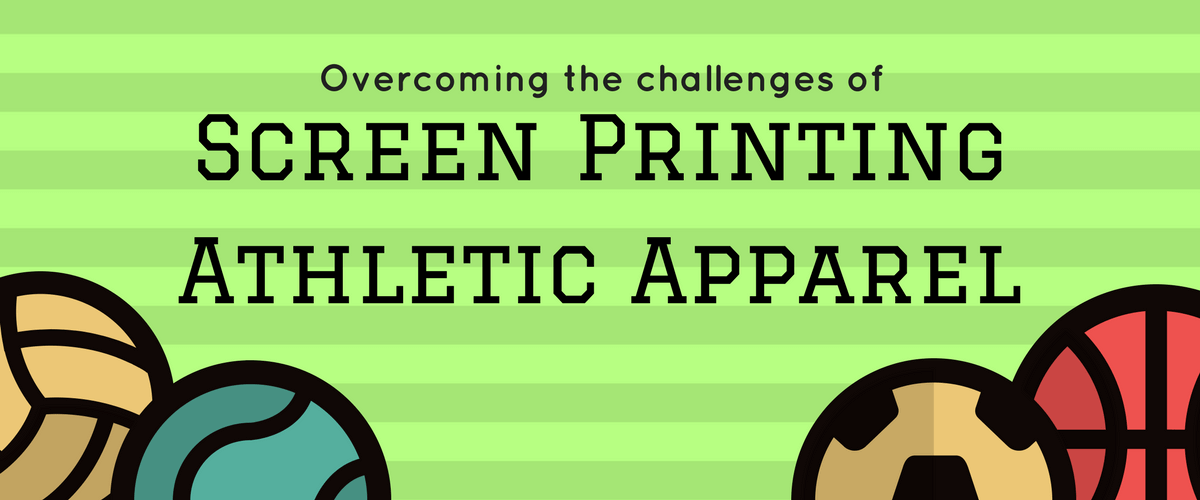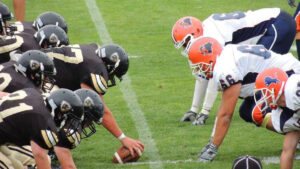

Революция в индустрии трафаретной печати благодаря передовым технологиям и качественному обслуживанию
Anatol Equipment Manufacturing Co.
1429 S Shields Dr
Waukegan, IL 60085


Революция в индустрии трафаретной печати благодаря передовым технологиям и качественному обслуживанию
Anatol Equipment Manufacturing Co.
1429 S Shields Dr
Waukegan, IL 60085

Even with its ever growing popularity, athletic apparel remains a challenge for screen printers. Athletic apparel is generally made from lightweight, slippery, stretchy synthetic fabrics, and these fabrics have to be printed the right way to prevent overstretching and discoloration of the dye. By confronting the challenges of printing on athletic apparel head on, you can produce the same quality prints on athletic fabrics that you would on a traditional cotton substrate.
Athletic fabrics are usually chosen for their lightweight, slippery feel. That texture can cause serious frustration on the screen printing press. The fabrics shift easily during printing, which can make it difficult to get clear registration. You often can’t rely on a platen adhesive to correct the problem, as the lightweight shirts can stick easily, causing the print to stretch when the shirt is pulled from the platen. When you approve designs for athletic wear, try to choose simple designs with only a few colors that will be forgiving to the shifting of the substrate during printing.

Fortunately, ink technology has kept up with the athletic fabric trend, and there are inks out there that are formulated to address the challenges of printing on synthetic jersey fabrics. One such challenge is dye migration: When heated in the conveyor dryer, the dyes will release from your synthetic substrate and settle into and discolor the ink. Look for low-bleed inks that cure at lower temperatures for longer times. These are made specifically to lessen the effects of dye migration.
Many athletic prints will be white ink on darker substrates. Printing an underbase of white, or even of a special underbase gray, can help the ink to stand out, and it can help prevent dye migration. Print a light underbase layer, perform a flash cure, and lay down a thicker deposit of your final ink color on top.
One major challenge of printing on athletic materials is the stretch of the fabric. Most performance fabrics are made to stretch and move with the athlete, or they are made to stretch snuggly over equipment (Think of a football jersey over pads). In screen printing, that elasticity can pose a problem: The substrate will outstretch the ink, causing the ink to crack. Of course, there are inks that are made to have more stretch, and you can mix a stretch additive into your ink, but that can inhibit the ink from blocking dye migration. Low-bleed ink made to cure at lower temperatures is ideal for stretchy, synthetic fabrics.

If you know your final product will be stretched tight when it’s worn over equipment, you can stretch the fabric slightly on the platen and apply your ink to pre-stretched fabric. That can allow your cured ink to stretch as needed, and it can help prevent image distortion. Should you choose to stretch your substrate during printing, you will have to take extra care not to smudge the ink when you remove it from the platen.
Ultimately, screen printing on athletic gear can be done successfully with a little forethought and preplanning. Know which inks you should be using on different types of athletic wear. Consider the obstacles the substrate will present. Most importantly, talk to your customer in advance and make sure they understand the limitations of the material so they know what to expect in the finished product.
Looking for more tips to help overcome common screen printing challenges? Keep checking out our blog!
Your message was successfully sent!